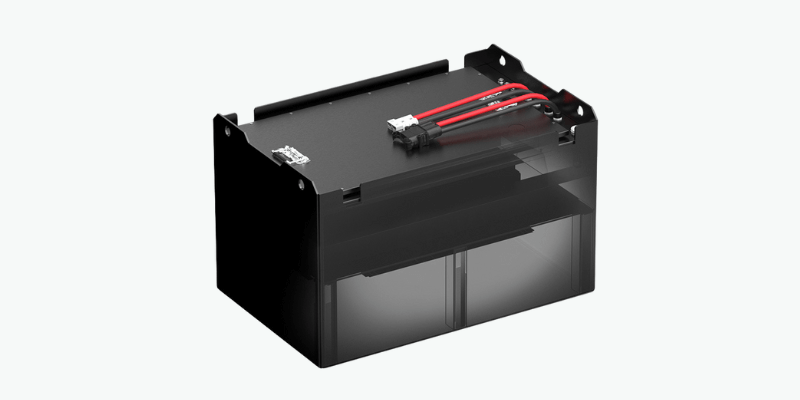Wybór odpowiedniej baterii przemysłowej jest niezbędny dla wydajności podczas korzystania z wózków widłowych, czy to dla jednej ciężarówki, czy floty. Odpowiednia elektryczna akumulator wózków widłowych może zaoszczędzić czas i pieniądze na dłuższą metę.
W tym artykule omówimy różne akumulatory wózków widłowych, ich kluczowe różnice i zakresy cen.
Rodzaje baterii wózka widłowego
Podczas gdy propan, olej napędowy i gaz to inne opcje, dwa trzecie wózków wózków widłowych w podejmowaniu każdego roku jest elektryczne.
Elektryczne wózki widłowe są zasilane głównie dwoma typami baterii: ołowiany kwas i litowo-jon.
Rodzaj akumulatora wpływa na częstotliwość wymiany: akumulatory litowo-jonowe mogą obsługiwać ponad 3000 cykli, podczas gdy akumulatory ołowiowe trwają około 1500 cykli. Ponadto akumulatory litowo-jonowe wymagają rzadziej wymiany, co czyni je preferowanymi do prowadzenia akumulatorów kwasowych dla wielu właścicieli firm.
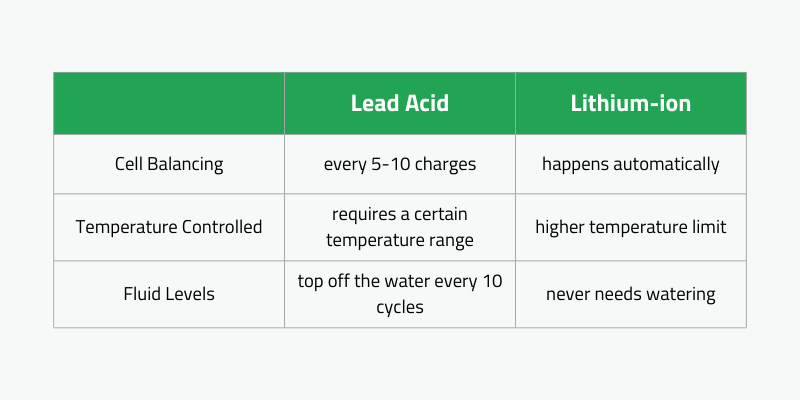
Napięcia akumulatora wózka widłowego
Pakiety akumulatorów wózków widłowych są zazwyczaj wybierane na podstawie sprzętu do podnoszenia i jego przeznaczenia. Istnieją cztery wspólne opcje napięcia:
- 24 V: Nadaje się do małych elektrycznych sprzętu do podnoszenia, takich jak jeźdźcy końcowi, środkowe jeźdźcy, stosy spacerowiczów i gniazda paletowe.
- 36 V: Zaprojektowany do środkowej wielkości sprzętu elektrycznego, takich jak wąskie wózki widłowe i stand-up zrównoważone wózki widłowe.
- 48 V: Używany do dużych urządzeń elektrycznych, w tym zrównoważonych wózków widłowych.
- 80 V: Zarezerwowane dla wytrzymałego sprzętu elektrycznego, takich jak duże zrównoważone wózki widłowe.
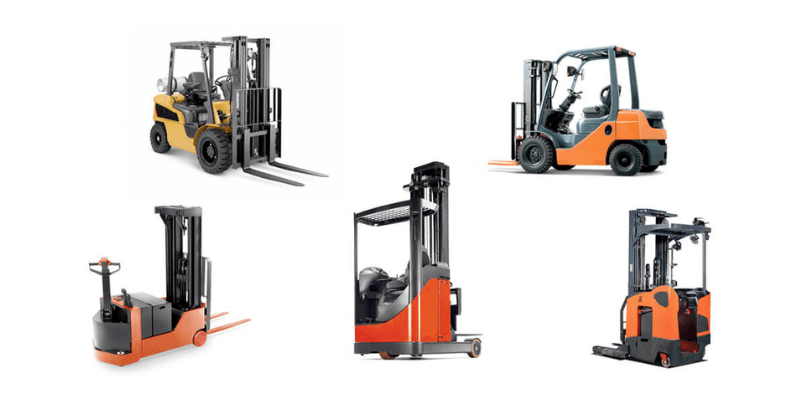
Ładowanie baterii wózka widłowego
Sposób, w jaki akumulator elektrycznej ciężarówki jest naładowany, wpływa na wydajność operacyjną i potrzeby stacji ładowania.
Akumulatory litowo-jonowe ładują szybciej i mogą być ładowane oportunistycznie bez konieczności pełnego ładowania. Natomiast akumulatory ołowiowe muszą być w pełni naładowane przed odłączeniem i nie można ich oportunistycznie naładować.
Oba typy pogarszają się, jeśli są niewłaściwie naładowane, ale jednostki ołowiowe mają surowsze wytyczne.
Wymagania stacji ładowania baterii wózków widłowych
Kluczowe jest lokalizacja systemu ładowania baterii wózków widłowych.
Akumulatory ołowiu wymagają określonych konfiguracji, których nie robią pakiety litowo-jonowe. Akumulatory litowo-jonowe mogą ładować bezpośrednio, gdy jest jeszcze w ciężarówce podnoszonej, bez dodatkowych kroków.
Akumulatory kwasowe należy usunąć w celu ładowania na osobnych ładowarkach zdolnych do wyrównania. Firmy z wieloma wózkami widłowymi potrzebują wielu ładowarek i przestrzeni, aby jednostki mogły się ochłodzić po ładowaniu. Proces ten jest czasochłonny, ponieważ pracownicy potrzebują specjalnego sprzętu do regularnego zarządzania swapami baterii.
Ponadto obszary ładowania kwasu ołowiowego wymagają odpowiedniej wentylacji z powodu ciepła i szkodliwych oparów wyprodukowanych podczas ładowania. I odwrotnie, akumulatory litowo-jonowe mogą ładować bezpośrednio w ciężarówce podnoszonej bez konieczności dedykowanej przestrzeni lub okresów chłodzenia. Po zwolnieniu mogą naładować natychmiastowe ładowanie.
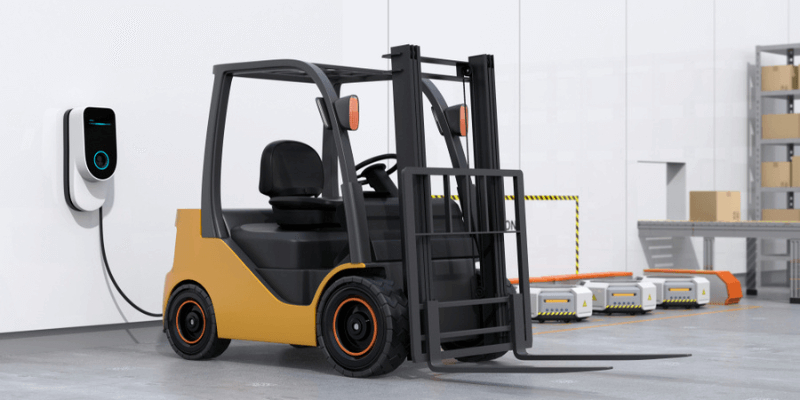
System podlewania baterii wózków widłowych
Ładowanie nie jest jedyną konserwacją wymaganą dla akumulatorów ołowiowych; Ich płyn wymaga regularnej uwagi.
W przeciwieństwie do uszczelnionych akumulatorów litowo-jonowych akumulatory ołowiowe wymagają układu podlewania. Pracownicy muszą nauczyć się prawidłowego podlewania tych baterii, aby zapewnić optymalną wydajność i długowieczność.
Kluczowe praktyki utrzymywania podlewania baterii wózków widłowych ołowiowych obejmują:
- Uzupełnianie wody dopiero po pełnym naładowaniu i ostygnięciu.
- Regularnie uzupełniając, aby utrzymać górną część płyt, zwykle co 10 cykli ładowania.
- Unikanie przepełnienia, aby umożliwić ekspansję cieczy podczas użytkowania.
- Używanie wody o pH od 5 do 7.
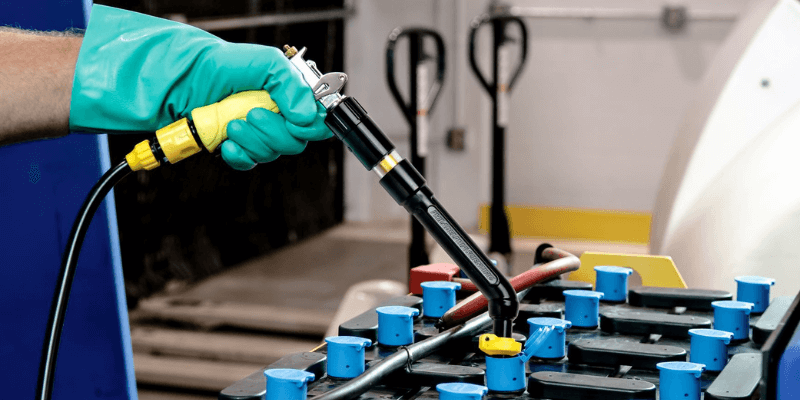
Bezpieczeństwo baterii wózków widłowych
Bezpieczeństwo jest kluczowe podczas obsługi akumulatorów wózków widłowych ze względu na zaangażowane chemikalia. Porównajmy akumulatory litowo-jonowe i ołowiowe pod względem bezpieczeństwa w miejscu pracy.
Zagrożenie dla bezpieczeństwa baterii ołowiu są następujące:
1. Rozlanie: Kwas siarkowy może rozlać się z tych baterii, zwłaszcza że wymagają one cotygodniowego podlewania. Niewłaściwe obsługa zwiększa ryzyko pracowników, co wymaga chemicznej stacji mycia.
2. Brakowanie: Baterie te mogą stać się wyjątkowo gorące podczas ładowania i mogą wyciekać wybuchowy gaz po szczytowym ładunku, co czyni kontrolę temperatury niezbędną dla bezpieczeństwa.
3. Gazy niebezpieczne: Osoby przeładowywania może uwalniać toksyczne gazy, takie jak siarkowodór, wodór i dwutlenek siarki w słabo wentylowane obszary. Zgniany zapach jaja wskazuje na obecność siarczku wodoru; Należy podjąć natychmiastowe środki ostrożności. Zainstaluj standardowe czujniki gazu katalitycznego lub czujniki elektrochemiczne w pomieszczeniach ładowania w celu monitorowania poziomów gazu.
4. Stare lub skorodowane akumulatory: podczas gdy nowe akumulatory ołowiowe stanowią minimalne ryzyko, jeśli są naładowane prawidłowo, stare lub skorodowane są niebezpieczne i należy je natychmiast usunąć.
Wręcz przeciwnie, akumulatory wózków litowo-jonowych są uszczelnione, eliminując ryzyko wycieków kwasowych lub korozji.
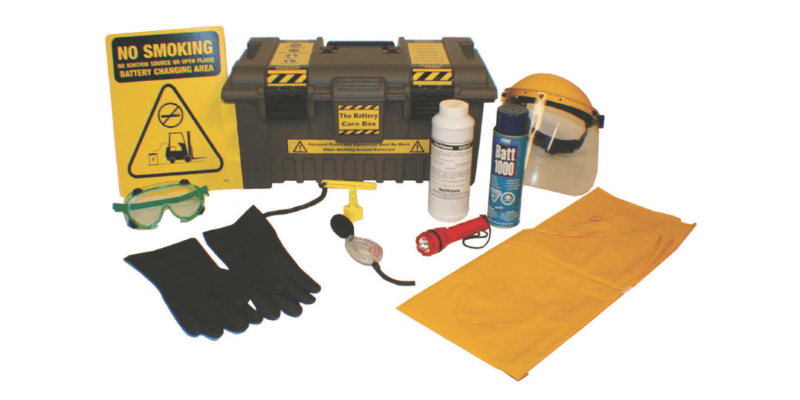
Ceny baterii wózka widłowego
Koszty baterii wózka widłowego różnią się znacznie w zależności od rodzaju. Bateria ołowiowa wynosi od 2000 USD do 6000 USD, podczas gdy bateria litowa kosztuje od 17 000 do 20 000 USD.
Jednak ceny te nie odzwierciedlają całkowitego kosztu własności (TCO). Menedżerowie powinni rozważyć długoterminowe wydatki związane z każdym typem przed podjęciem decyzji.
W operacjach magazynowych siła robocza jest największym kosztem, mierzonym w czasie. Zakup akumulatorów ołowiu zwiększy ogólne koszty wózka widłowego, ponieważ wymagają szerokich godzin pracy w celu właściwego działania. Każda bateria trwa około 8 godzin i potrzebuje 16 godzin na naładowanie i ostygnięcie, co wymaga co najmniej trzech akumulatorów na wózek widłowy dla operacji 24/7. Do konserwacji potrzebne są również dodatkowe baterie, co prowadzi do większej liczby dokumentów i oddanego zespołu do śledzenia.
Akumulatory ołowiowe są duże i wymagają wyznaczonej przestrzeni magazynowej, która spełnia kanadyjskie Centrum Wytycznych dotyczących zdrowia i bezpieczeństwa zawodowego, ponosząc dodatkowe koszty. A specjalistyczny sprzęt jest niezbędny do monitorowania tych akumulatorów.
Ponadto istnieje ryzyko zawodowe ze względu na ich żrące płyny; Wycieki mogą zatrzymać operacje i ponosić dalsze koszty czasu.
Podczas gdy początkowe koszty baterii są niskie, trwają tylko około 1500 cykli z odpowiednią konserwacją, wymagając wymiany co 2-3 lata wraz z kosztami usuwania starych jednostek.
Z drugiej strony bateria wózka widłowego litowo-jonowego jest 55% lżejsza niż akumulatory ołowiu i oferuje takie korzyści, jak zmniejszone wymagania kosmiczne, szybsze ładowanie, wyższa efektywność energetyczna, lepsze bezpieczeństwo pracowników, lepsza wydajność przeziębienia i zwiększona wydajność.
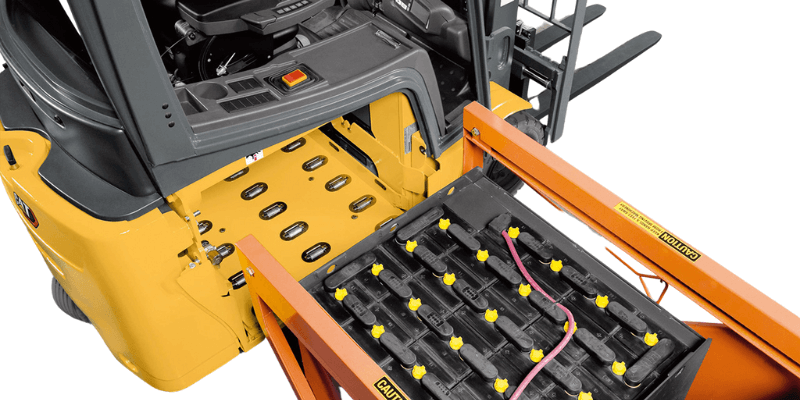
Wniosek
Akumulatory litowo-jonowe, choć początkowo droższe, zapewniają długoterminowe oszczędności poprzez wydajność i niższą konserwację. Ich szybkie ładowanie, trwałość i bezpieczeństwo sprawiają, że są idealne do wózków widłowych.
Wybierając między kwasem ołowiowym a litowo-jonowym, rozważ swoją częstotliwość użytkowania i potrzeby bezpieczeństwa. Inwestycja inteligentnych baterii zwiększa wydajność i zmniejsza przestoje, pomagając firmie pozostać konkurencyjnym na rynku wózków widłowych elektrycznych.

